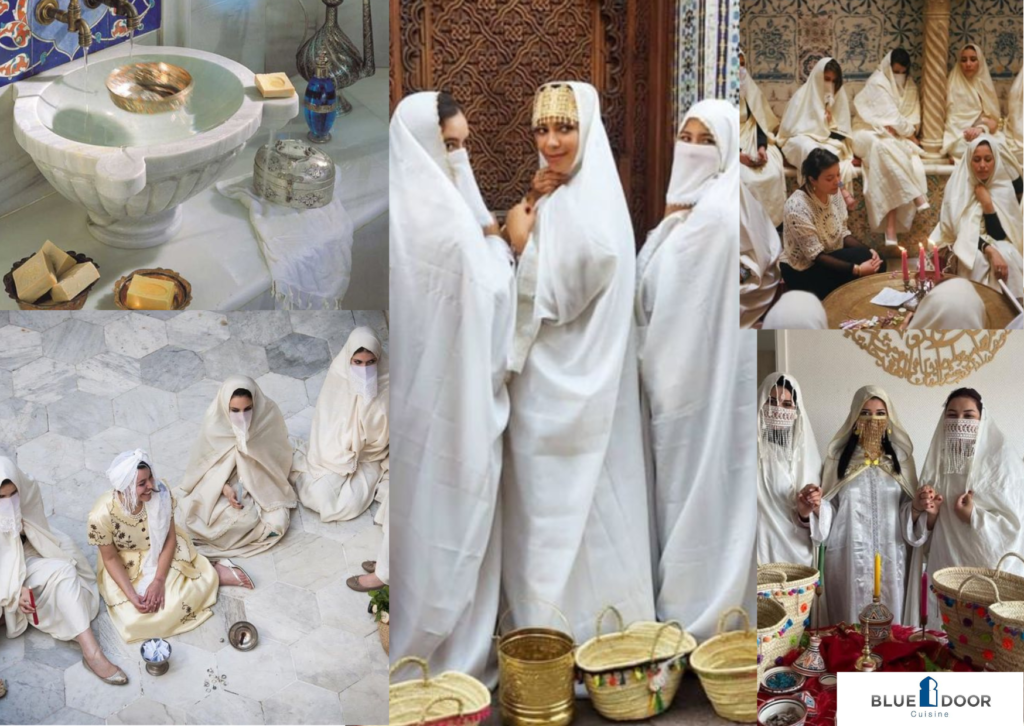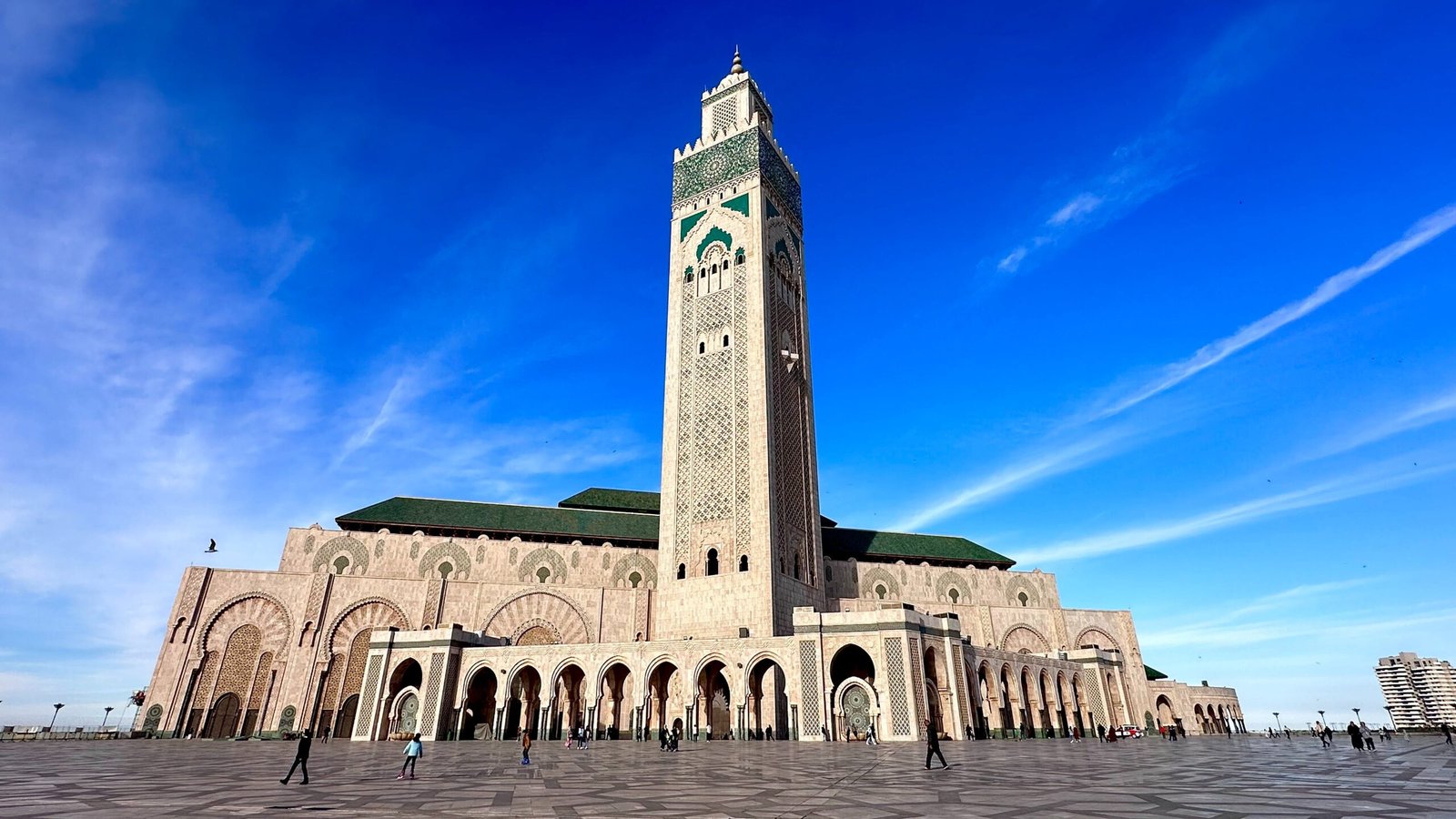Islam and what is unique in Morocco
There are some differences in islamic habits and customs unique to Morocco.
Fridays in Morocco
Friday is the holy day for Islam, Christianity’s Sunday. Many shops will be closed in the afternoon, at least for a few hours during the big prayer service, and to relax with food and the family – for many, the one time off in the week.
Generally speaking, if you attend the Friday prayer service, you are absolved of all sins through the week, much like going to the confessional in a Catholic church.
While the rest of the Islamic world will visit their dead any day, Moroccan women have a custom of visiting their dead only on a Friday. They will recite the Quran in front of the grave of their loved ones.
Some give money or leave leftovers – clothing or food, saying:
“I am giving food in the name of (deceased).”
This will benefit them in their ‘afterlife’.
Islamic “Afterlife”
After burial, the dead are resurrected, but not into this physical world. They exist in a ‘room’ or space, and will stay there till the final judgement day of all time.
While Christians behave in order to make it to Heaven, Muslims behave in order to get a bigger and nicer space in this “afterlife” while they wait.
To improve their afterlife credits they can donate charitable works such as mosques, schools and water fountains – the reason there are so many scattered through the medinas.
The badly behaved get cramped spaces which may be filled with such things as snakes and spiders.
Like many cultures and religions over time, people visit the graves of loved ones. In Morocco, this is specifically done on a Friday morning, and often includes a ceremonial washing down of the grave, with family gatherings and couscous to follow during the afternoon.

Funerals
In Morocco, women are not permitted to attend funerals. This is because they “create drama and distractions”. The men will carry the dead through the streets with a trail of male family members and well-wishers.
Remember, Morocco is not an Arabic country. It is a Berber or Amazigh country to which Islam was brought.
I believe the traditional way of mourning for the Berbers involved a lot of wailing – something which happens in other African countries. It is loud and mournful, but can be a cathartic way of dealing with the recent loss.
When the Arabs brought Islam, it didn’t approve of this local traditional custom. So in Morocco women were forbidden from attending funerals.
The ululation you will hear at weddings is a similar kind of vocal expression which is a part of the culture. So whenever you hear that, you know there is a wedding nearby.
Women must also wear white for 40 days after the death of her husband. This is because there is a ‘no sex’ rule for this time. That way, if she is pregnant it is clear that the baby was her deceased husband’s.
A man whose wife dies, on the other hand, may remarry again the next day.
It is still a practice by some families that on the wedding night the woman must present her underpants or the bedsheets to an uncle for inspection. It is believed that the presence of blood proves that she was still a virgin.
To protect them, many girls grow up with a curfew, as early as 8pm, which lasts until they are married – even if they are well past school age by that time, and even into their 30s. They are not even permitted to spend the night at a girlfriend’s house.

Circumcision
This is a declaration of manhood. Now it is mostly done as a baby, but until as recently 10 years ago it was done at the age of 8 or 9 years old. It was done by the Hajjam whose job it was to cut hair, and pull out teeth – no anaesthetic. Some still continue this practice at home.
For the circumcision, the djellaba was lifted and the foresking pulled forewards and cut with the ankles squeezed together. I’m sure the boys are happy to now mostly have this done in a hospital as a baby.
Visiting a Saint
The visiting of saints is a part of ancestry and very important in Morocco. People are very concerned about their holy heritage, and will often try to gain extra afterlife credits by donating food and money to the tombs of saints and other important people.
As a result, there are many places of pilgrimage – mausoleums, tombs, gravesides etc. A woman keen to get pregnant will even take off her undergarments at certain places and dangle them over the candles in the belief this will help. There are such rituals for pregnancy, health and wealth all over the world.
A fun take on the importance of visiting saints is a recent Moroccan movie called “The Unknown Saint”. Its about a thief who has just robbed a bank and realizes he’s going to get caught. He takes his stolen money to the top of a nearby hill and buries it, making it look like a grave to hide it.
When he returns after his jail sentence, he discovers it has been turned into a place of pilgrimage as the tomb of an unknown saint, including a whole town which has grown up around it. Re-aquiring his ill-gotten gains has become rather more tricky than he’d anticipated.
If you are one for quirky movies, or just want a bit more insight into Moroccan culture, this is a delightful movie and well worth the watch.

Couscous
No other Muslim country has a special Friday food, but in Morocco it is the custom to eat couscous on Fridays, and only on Fridays. It is Morocco’s version of the Sunday roast.
It is slow roasted meats and vegetables served on top of a pyramid of steamed couscous, a very small pasta made from semolina flour. A rich broth flavoured by ginger, turmeric and pepper is poured over the dish, which is topped with sweet caramelized onion.
Maybe you could learn the tricks to a top couscous through a food event at Blue Door Cuisine.
Mediators
Mohammad’s angle was that there is no need for a mediator between oneself and Allah. However, Morocco loves mediators. You will notice that towns, villages and suburbs are frequently called ‘Sidi’ which means ‘my master’, often indicating a place where a saint lived or visited.
One of the best known saints and historical figures was Ibn Battuta. Tangier is filled with places named after him – the airport, Ibn Battouta mall, schools, cafes, restaurants, suburbs, streets… He was a Maghrebi (Moroccan-Berber) traveller, scholar and explorer, born in Tangier in 1304. He died in Marrakech in 1369, but was buried in Tangier.
He spent a total of 29 years travelling – to mostly Muslim countries – and writing about the people and places he visited to teach others about different cultures.
He travelled across maybe 44 modern day countries, clocking up 120,000 km (75,000 miles) – and must have gone through a lot of shoes.
His tomb is located in the medina – a perfect place to visit before a food event at Blue Door Cuisine on the other side of the medina, where you can sit with a tea and take in the Mediterranean views which Ibn Battouta grew up with 700 years ago.
Written by OzzyHopper.
Check out the ozzyhopper.com. For a more blogs on my misadventures in Morocco and elsewhere.



